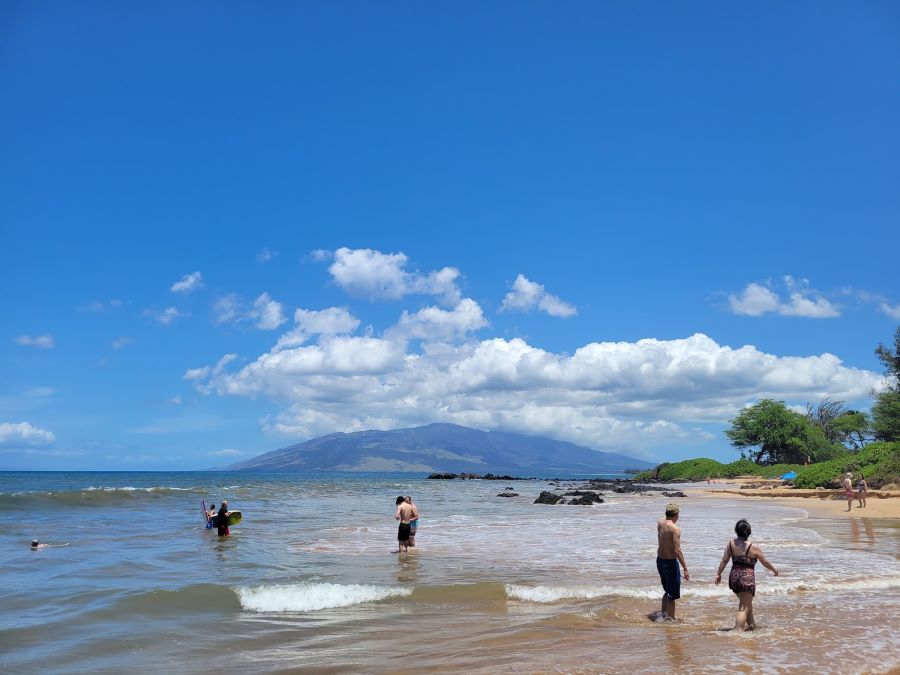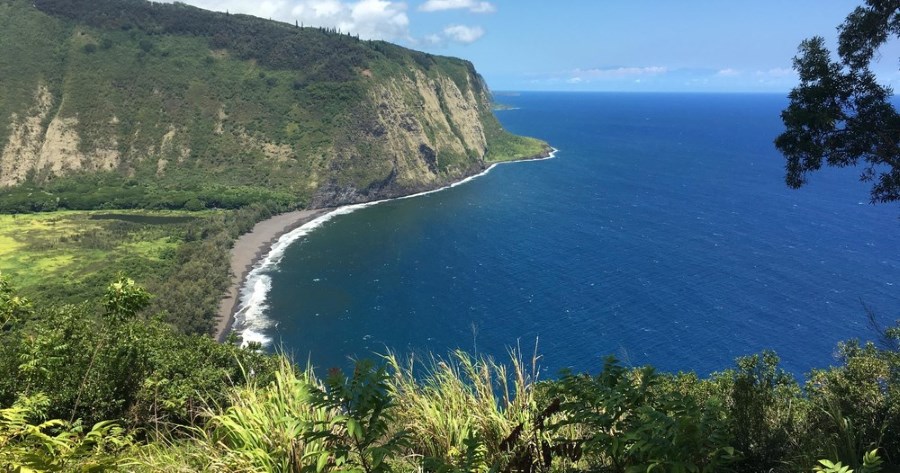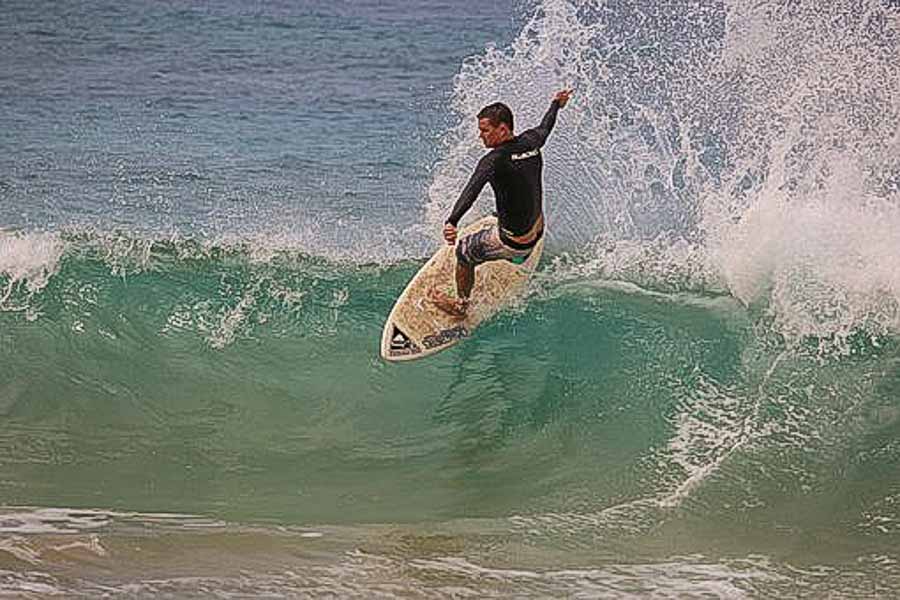Hawaii in Winter – what to expect when you visit paradise
Most visitors to Hawaii in winter typically are escaping colder climates to enjoy warmer weather, outdoor activities and the gorgeous beaches and landscapes of Hawaii. You’ll probably see that the winter timeframe especially the holidays mark a very popular and busy timeframe for visitors to come to the island. What they typically don’t understand is that winter typically is the wet season on the islands, so if you’re looking for sun and fun outdoors, then you have to choose very carefully about where you visit and stay to enjoy plenty of time for beach fun and exploring.
Enjoy the winter holidays in Hawaii – beach, coastal drives, amazing foods, adventure experiences and outdoor fun

What’s the weather like on each island?
Hawaii has only two seasons during the calendar year, for Hawaiian natives the two seasons are called Hoolio and Kau. These two seasons typically are respective to the winter and summer time.
Winter weather on each of the islands tend to be milder but still warm with average temperatures ranging in the daytime from the low to mid-seventies during the day and the mid 60’s to 70s during the night. The winter weather typically brings in more rain and moisture and the areas on the north side of each island tend to have larger waves that happen with the wind patterns that hit the northeastern parts of the the islands. Watching all the surf, SUP boarding and a variety of competitions that involve the arrival of the Big Waves truly is a site to see especially visitors that have not seen waves of this magnitude.
We break up all these weather winter patterns for each island below:

Oahu conditions in winter
Winter on Oahu, which runs from about November through March, is mild and comfortable compared to most mainland destinations. Daytime temperatures typically hover in the mid-70s to low 80s °F (around 24–28°C), while evenings cool down slightly, making it pleasant for outdoor activities. Rain showers are more frequent during this season, especially on the island’s windward (eastern) side and in the mountains, but they’re usually brief and followed by sunshine. The ocean conditions shift too—North Shore beaches see massive surf and are a hub for professional surfing competitions, while the southern shores remain calm and swimmable. Overall, winter on Oahu brings a mix of lush landscapes, dramatic waves, and comfortable weather ideal for exploring the island.

Maui conditions in winter
Winter on Maui, from November through March, brings mild temperatures and a touch more rain, especially on the island’s north and east sides. Daytime highs usually range from the mid-70s to low 80s °F (24–28°C), while evenings can cool to the 60s °F, particularly in higher elevations like Haleakalā. The season’s rain helps keep the island lush and green, making waterfalls and rainforests especially beautiful. Winter also marks whale-watching season, with humpback whales migrating to the warm waters off Maui’s coasts—particularly around Lahaina and Kihei. While the north shore can experience strong surf, beaches on the south and west sides stay calm and pleasant for swimming and snorkeling. Overall, winter in Maui feels relaxed, scenic, and perfect for outdoor adventures without the summer heat.

Kauai conditions in winter
Winter on Kauai, from November through March, brings cooler temperatures, more frequent rain, and a lush, tropical feel. Daytime highs generally stay in the mid-70s °F (around 24°C), while evenings dip into the 60s. The island’s north and east shores tend to see heavier showers, especially around Hanalei and the Nā Pali Coast, while the south and west sides—like Poipu—stay sunnier and drier. The winter rains keep Kauai’s waterfalls full and its landscapes especially green, making it a great time for photography and hiking when the trails are safe. Ocean conditions shift too: big waves hit the north shore, attracting experienced surfers, while the south shore remains calmer for swimming and snorkeling. Overall, winter in Kauai offers a balance of cooler comfort, dramatic scenery, and a more relaxed pace.

Big Island conditions in winter
Winter on the Big Island, from November through March, brings mild temperatures and some of the most varied weather in Hawaii. Coastal areas stay warm, with daytime highs in the mid-70s to low 80s °F (24–28°C), while nights can cool into the 60s. The island’s east side, around Hilo, tends to be wetter during this season, while the west side near Kona stays mostly sunny and dry. At higher elevations like Mauna Kea and Mauna Loa, temperatures drop sharply, and it’s not unusual to see snow on the summits. The contrast of snowy peaks with tropical beaches makes winter here especially striking. The season also brings migrating humpback whales offshore, adding to the island’s natural drama. Overall, winter on the Big Island feels refreshing, diverse, and ideal for both beach days and cool mountain adventures.

Water & Surf Conditions
The Hawaiian Islands’ near-shore water temperatures remain comfortable throughout the year. The average water temperature is 74° F (23.3° C), with a summer high of 80° F (26.7° C). Wave action varies dramatically between island coasts and seasons. Summer waters are typically gentle on all beaches. During the winter on many north shore beaches, Pacific storms drive ocean swells towards the islands, creating The Hawaiian Islands’ legendary big waves.
Wave conditions are often very localized, so if the waves are too big on your beach, you can usually find calmer water at a more sheltered beach. Strong currents can make any beach unsafe at any time during the year, particularly in the winter. Ask your hotel staff or a lifeguard about ocean currents or look for warning flags and posted beach conditions.

What to pack for winter on the islands
Although winters in Hawaii are generally warmer, colder and rainy days are not uncommon. Bring a mix of clothing options, such as shorts for the warmer days and long pants, light jackets and closed-toe shoes for the cooler and rainy days. But as we say here in Hawaii – no rain, no rainbows! Be on the lookout for a rainbow any time it starts to drizzle. If you’re lucky you may see a double (or even a triple) rainbow!

Hawaii winter festivals and events
Wintertime draws in tourist crowds for special winter festivals and events that are unique on all the islands. Here’s a quick sampling of the typical events that occur on each island during the winter/holiday season.
Hawaii Winter Festivals and Events (November–March)
1. December – Christmas and Holiday Celebrations
- Honolulu City Lights (Oahu): A month-long festival with a giant Christmas tree, light displays, parades, and food booths at Honolulu Hale.
- Waikiki New Year’s Eve Fireworks (Oahu): A beachfront fireworks show and live music to ring in the New Year.
- Kauai Festival of Lights (Kauai): Holiday displays and handcrafted decorations at the historic County Building in Lihue.
2. January – Cultural and Outdoor Events
- Sony Open in Hawaii (Oahu): A PGA golf tournament at Waialae Country Club attracting international players.
- Maui Whale Festival (Maui): A celebration of humpback whale season with parades, concerts, and educational events in Kihei.
- Waimea Cherry Blossom Heritage Festival (Big Island): Japanese cultural performances, food vendors, and pink cherry trees blooming in Waimea.
3. February – Art, Music, and Community Events
- Pow! Wow! Hawaii (Oahu): Street art festival in Kaka‘ako featuring local and international muralists.
- Great Aloha Run (Oahu): A popular community fun run from Aloha Tower to Aloha Stadium.
- Kauai Quilt Show (Kauai): Local artisans display colorful quilts at the Kauai Society of Artists Gallery.
4. March – Spring and Heritage Celebrations
- Honolulu Festival (Oahu): A cultural event promoting friendship between Hawaii and the Pacific Rim, with performances, crafts, and a grand parade.
- Kona Brewers Festival (Big Island): Craft beer tastings, local food, and live entertainment at Kailua-Kona.
- Prince Kūhiō Day Celebrations (Statewide): Honors the beloved Hawaiian prince with hula, music, and community gatherings across the islands.
These winter months offer a lively mix of Hawaiian culture, art, and holiday spirit, all set against the islands’ mild and sunny weather.

Further Reading on Visiting Hawaii
Check out these other posts to exploring the various islands of Hawaii
Don’t make these mistakes when you visit the island
Eco Tourism and sustainability
Staying healthy and boost your immune system
Lessons learned to living in Hawaii

Conclusion to visiting Hawaii in winter
Visiting Hawaii in winter offers a wonderful mix of comfortable weather, lush scenery, and lively seasonal events. The islands stay warm and inviting, with cooler evenings and occasional showers that bring the landscapes to life. It’s a great time for whale watching, exploring waterfalls, or enjoying cultural festivals that celebrate Hawaiian heritage and holiday traditions. While surf on the north shores can be powerful and exciting to watch, calmer beaches on the south sides make for perfect swimming days. Whether you’re looking for outdoor adventure, local experiences, or simply a break from cold mainland weather, winter in Hawaii delivers an easy balance of relaxation and discovery.

Author Bio – Noel Morata
Having lived in Hawaii for over 15 years, I’ve explored all the historic and cultural sites, tried delicious traditional food, fusion and local style dishes and learned a lot about growing and sustainability.
Hawaii for me is ever changing and I visit many of these places regularly for inspiration, changes that may occur, seasonality and cultural practises. I hope to share with you all the fascinating things and places I’ve learned grown appreciation for and hope that you will find the information helpful to visiting the islands.
I love showing visitors and guests to experience winter season throughout the islands and celebrating holidays and Makahiki season in Hawaii.


0 Comments